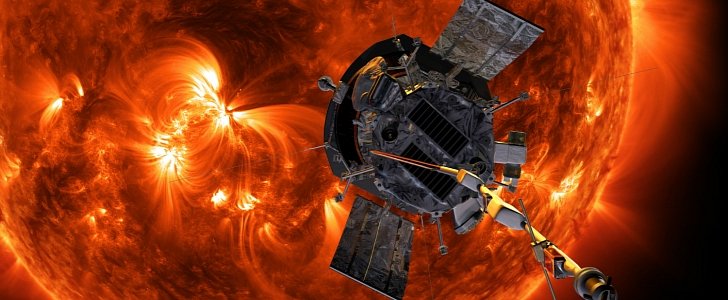The Parker Solar Probe, the fastest spacecraft in human history, completed its first orbit around the Sun in January, merely five months after it departed Space Launch Complex-37 at Cape Canaveral.
NASA announced that on January 19 the probe finished a full circle around our star, and began the second orbit of the total of 24 it is scheduled to conduct over the following years.
A few weeks before that moment, on January 1, the ship entered full operational status, sending a wealth of data back to Earth (17 gigabits) via the Deep Space Network. NASA estimates the full data package from this first orbit will complete downloading sometime in April.
“It’s been an illuminating and fascinating first orbit,” said in a statement Parker Solar Probe Project Manager Andy Driesman.
“We’ve learned a lot about how the spacecraft operates and reacts to the solar environment, and I’m proud to say the team’s projections have been very accurate.”
Having been sent off out planet on board a Delta IV Heavy rocket, the Parker Solar Probe is now moving at 430,000 miles per hour (692,000 km/h). During its 24 runs around the Sun, it will use four instrument suites to gather data relevant to the understanding of the Sun’s fundamental physics and the prediction of space weather events.
The probe, built by the Johns Hopkins Applied Physics Laboratory, is the machine that has come closest to the Sun in mankind’s history, traveling at a distance of about 15 million miles from the star (24 million km).
To be able to withstand the intense heat, the spacecraft was fitted with a 160 pounds foam core shield made of 97 percent air. The foam sits between two panels of superheated carbon-carbon composite, sprayed on the sun-facing side with a specially formulated white coating.
The temperatures the shield has to endure are up to 2,500 degrees Fahrenheit (1,371 degrees Celsius).
A few weeks before that moment, on January 1, the ship entered full operational status, sending a wealth of data back to Earth (17 gigabits) via the Deep Space Network. NASA estimates the full data package from this first orbit will complete downloading sometime in April.
“It’s been an illuminating and fascinating first orbit,” said in a statement Parker Solar Probe Project Manager Andy Driesman.
“We’ve learned a lot about how the spacecraft operates and reacts to the solar environment, and I’m proud to say the team’s projections have been very accurate.”
Having been sent off out planet on board a Delta IV Heavy rocket, the Parker Solar Probe is now moving at 430,000 miles per hour (692,000 km/h). During its 24 runs around the Sun, it will use four instrument suites to gather data relevant to the understanding of the Sun’s fundamental physics and the prediction of space weather events.
The probe, built by the Johns Hopkins Applied Physics Laboratory, is the machine that has come closest to the Sun in mankind’s history, traveling at a distance of about 15 million miles from the star (24 million km).
To be able to withstand the intense heat, the spacecraft was fitted with a 160 pounds foam core shield made of 97 percent air. The foam sits between two panels of superheated carbon-carbon composite, sprayed on the sun-facing side with a specially formulated white coating.
The temperatures the shield has to endure are up to 2,500 degrees Fahrenheit (1,371 degrees Celsius).

